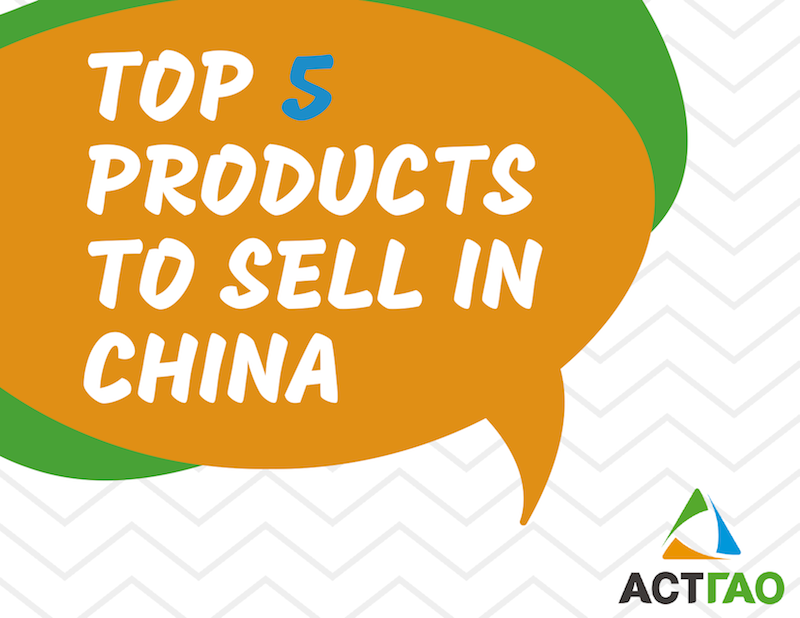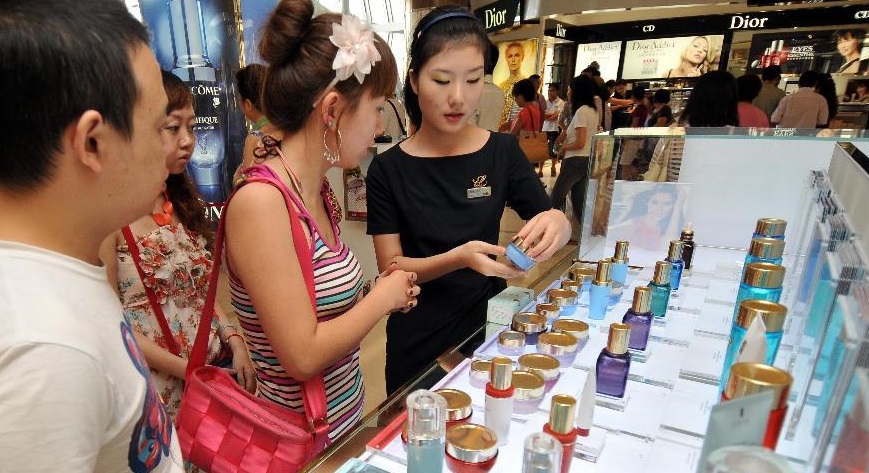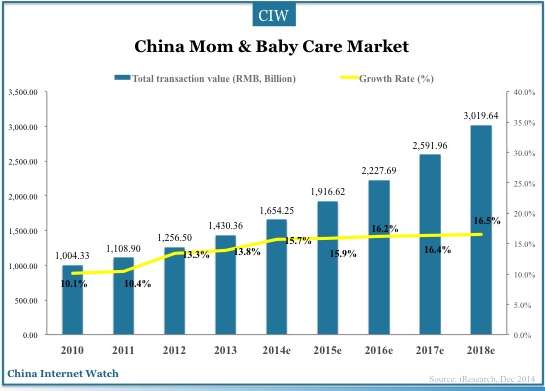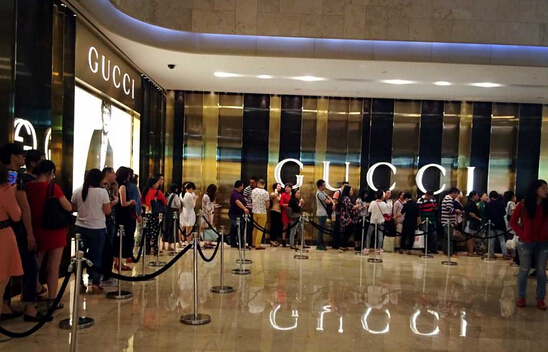There is a vastly growing middle class of Chinese consumers. With increased exposure to the internet and foreign products, there are plenty of opportunities for selling products to Asia, with 5 product categories generating the most sales.

Cosmetics

In a domestic market saturated with counterfeits and low quality products, Chinese consumers perceive American cosmetics as safer and more trustworthy. WeChat and other E-commerce platforms allows brands to give Chinese consumers both the confidence and the trust that are representative of what is now being demanded.
Chinese consumers value products that are ‘Made in the USA’ for their prestige as status symbols. Young Chinese adults, in particular, passionately seek niche brands that reflect their unique tastes and lifestyle.
As there is more concern about the environment and their own well-being, Chinese consumers are looking for more organic or natural products, as well as “Cosmeceuticals” products that offer both a cosmetic and pharmaceutical function.
The growing affluence of those middle class consumers is creating a rapid “consumption upgrade” on the cosmetics market, with both women and men ready to spend on high-quality U.S. products. Great news for U.S. cosmetics brands, as cross-border e-commerce can accelerate their sales. In addition, selling cosmetics through cross-border ecommerce offers a way for foreign brands to avoid Asia’s animal testing — a process that is usually required for traditionally imported cosmetics.
Mother & Baby products

With the change of the one-child policy in 2016, the “Mother and Baby” industry is booming! And so, the market is undergoing major restructuring. Parents’ purchasing behavior is changing, and more than ever, they are willing to pay more for higher quality and healthier products for their babies.
However, as counterfeiting, food poisoning, and poor quality products remain major issues, U.S. and other foreign products are perceived as a safer and more trustworthy alternative to domestic goods. Foreign brands have become more accessible, affluent mothers are looking for products made from natural ingredients that meet international health and safety standards. While milk powder, clothing, and toys already comprise a large proportion of infant and child products, the awareness for hygiene has given way to the development of new product segments such as skin care, hair products and baby wipes.
Cross-border e-commerce platforms are frequently used channels to search and research this type of goods, giving them a more secure way than buying in domestic stores.
Health Supplements

Building on the long Chinese tradition to maintain a healthy body, there is a rising demand for personal care products or anything health or hygiene related. The general lack of trust in the quality of domestic food products, and concerns related to Asia’s air, soil and water pollution has pushed people to spend on more on health supplements, creating an opening for foreign brands. A bigger online presence and appreciation of Western lifestyle and products, all contribute to the growth of the health supplement market.
While the older generations have traditionally driven the health supplement market, more than half of the younger urban population has jumped on the vitamin and dietary supplement bandwagon. Cross-border e-commerce platforms are especially useful for the marketing and distribution of health supplements products that are both specialized and easily delivered.
Luxury Goods

A new wave of big-spending Chinese shoppers is driving the sales growth for the global luxury-goods industry. Their pursuit of luxury items include fancy watches, designer clothes, handbags and high-priced-liquor. The number of Chinese millionaires is about to surpass that of any other nation, and by 2021 Asia is expected to have the highest number of affluent households in the world.
In addition to the increase in spending power, the increase in use of online shopping have made Chinese shoppers become much more impulsive buyers. This represents a major shift in consumer behavior. As Chinese luxury consumers have become impulsive, the influence in their purchase decisions from friends and family ranks above the in-store experience.
Although wealthy Chinese consumers have become more sophisticated, they remain cautious, needing reassurance about the quality and authenticity of their purchases. This phenomenon is a reflection of how dissatisfied wealthy Chinese consumers are when it comes to purchasing luxury goods at home and is a boon to trusted foreign brands.
Liquor

Asia’s appetite for imported spirits remains insatiable with significant growth in both volume and value. Specialty spirits are in important part of the market: brandy, whisky, vodka, gin, tequila and mezcal (significant growth potential with fastest growth), liqueurs, and rum.
Asia’s brandy imports value climbed by 25.3% to US$327 million from 2016 to 2017.Chinese consumers bought 7.73 million litres of whisky, a year-on-year increase of 11.2% in volume. Asia imported 2.64 million litres of vodka worth about US$7.14 million, representing a 108% jump in volume. Asia’s total gin imports amounted to 650,000 litres, while tequila imports stood at 480,000 litres. Rum imports during the period increased in both volume and value reaching 1.26 million litres and value at US$3.6 million.
The rise in drinking culture at social occasions, increased disposable income among young consumers (especially in cosmopolitan urbans areas), and more female drinkers is set to boost the industry.
